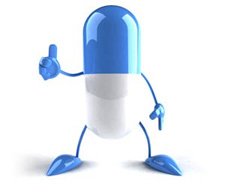Helpful Bacteria

A Quick Guide to Helpful Bacteria
Just the word “bacteria” can often cause many people to visualize disease, but there are actually more helpful bacteria than harmful. In fact, there are numerous everyday processes we rely on that would be impossible without the use of bacteria.
Bacteria could very easily be the oldest living organism on earth. It is not known exactly how long it has been present, but it is acknowledged that bacteria were first discovered in the late 1600’s; not by a scientist but by a merchant of cloth. Anton van Leeuwenhoek wanted to be able to examine the weave of different cloths more intently, and so developed an eyeglass lens capable to magnifying an object up to 500 times its normal size. Likely just due to a natural curiosity, van Leeuwenhoek began examining other items besides cloth, and quite by accident discovered that things like pond water and teeth scrapings were swarming with living things. He sent reports of his findings along with drawings depicting what he saw to the Royal Society in London, and set off the beginning of bacteria research. That original report and drawings still exist to this day.
Scientists consider the study of bacteria to be an ongoing research, as they have discovered the amazing ability of bacteria to mutate quickly thus creating new strains continually. Over the passage of time and in depth research, it has been discovered that bacteria has countless purposes in life; demonstrating that not only bacteria are helpful but also necessary to our very existence.
Health Benefits
Probiotics are microorganisms, or bacteria, that inhabit the human body in greater quantities than human cells. A great number of them reside in our digestive systems, but there is also a large amount in the urogenital tracts. Their purpose is to defend the body from not only harmful bacteria but also other organisms that can create havoc, such as yeast. Some influences are able to decrease the numbers of the helpful bacteria, such as aging, diets, environmental concerns, stress, oral contraceptives and antibiotics. When the level of these bacteria decrease, humans are more likely to become sick.
Certain types of bacteria are also used to produce antibiotics, such as streptomycin and tetracycline.
Dietary Benefits
The food industry depends on some types of bacteria for a variety of reasons. Yogurts and cheeses, for example, require a fermentation process in order to achieve their flavors. Bacteria are a major component of the fermentation process through the production of lactic acid. The lactic acid serves to sour the milk and milk sugars used in manufacturing both foods, and thereby brings out different flavors. An assortment of bacteria is used to achieve the different flavors.
Fermentation caused by the use of bacteria also plays a role in the production of wines and beers. While not the primary element in the process, the acetic acid that is produced by bacteria is a necessary component in addition to the yeasts in these products.
Think for a moment of all of the pickled foods consumed: pickles, olives, cured meats, soy sauce and others all rely on the fermentation process in which bacteria has part.
Other Benefits
Many industries depend on bacteria for the products or services they provide. Sewage treatment, a vital service performed around the world, requires bacteria to cause the break down of organic material in sewage and create methane gas, which is used as fuel by the treatment facility.
Composting, ethanol production and even biotechnology are all areas in which helpful bacteria play a vital role.
The world could not survive without bacteria. The purposes they serve are still not fully understood by researchers, who continue to study bacteria in hopes of finding even more ways to harness and control the organism.